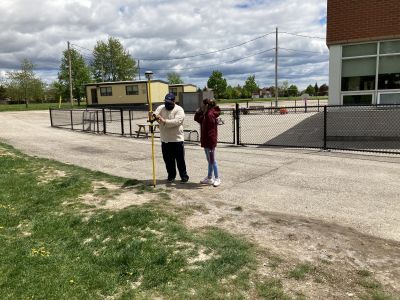Construction: final excavated grade and verification
LID designs typically have specific grading requirements. Verifying depths and slopes is critical for the optimal performance of the facility. For example, if the design calls for a channel with a 1% slope, the channel may not function as designed if it has a 2% slope instead.
Excavation to the sub-grade will differ depending on whether the design is for a full infiltration, partial infiltration, or no infiltration LID system. If it’s a full infiltration or partial infiltration practice, the sub-grade should be as level as possible to promote even infiltration across the facility’s footprint. For no infiltration designs, excavate sub-grade slopes to the design grade in the direction of the underdrain, typically 1 to 2%.
As with all infiltrating LID practices, avoid compaction of sub-grade soils whenever possible. However, depending on the design and the local municipality, compaction of the sub-grade may be required for permeable pavement LIDs.
Construction steps
- Excavate the final 100 mm, to the final design grade, using appropriate equipment. This is often done with hand tools.
- Confirm excavation depths and slopes using appropriate equipment (transit levels, global navigation satellite systems, etc.)
Key inspection points
- Confirm final excavated depths and slopes.
Mistakes to avoid
- “eye-balling” depths and slopes
